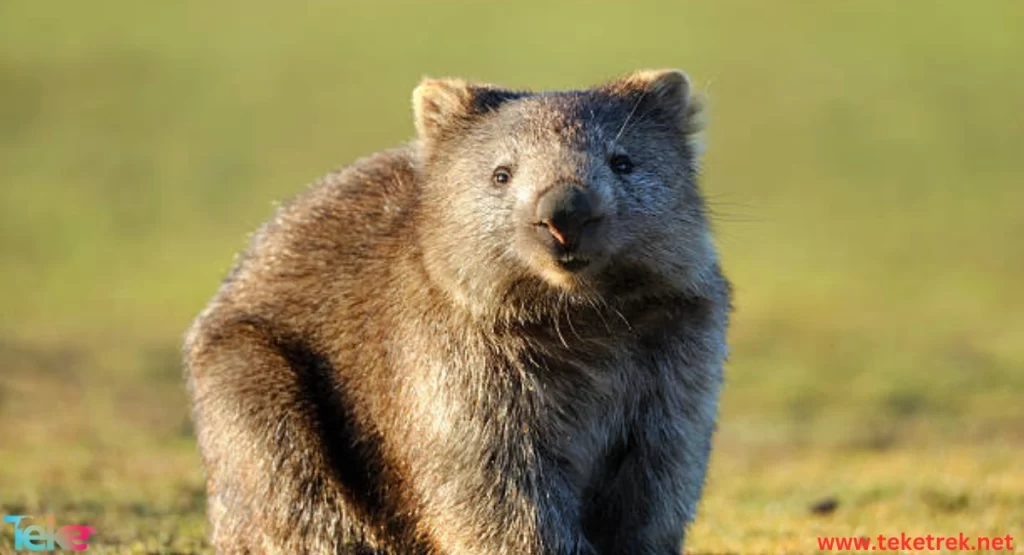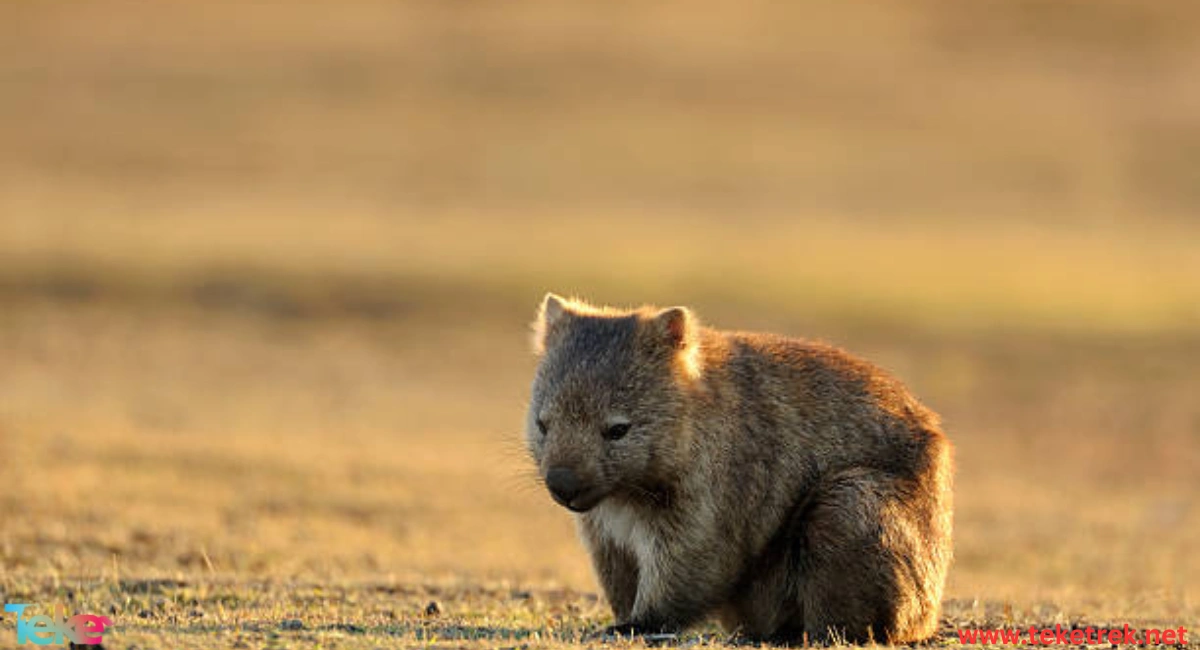Discover fascinating facts about the wombat, an enigmatic creature that surprises with its unique nature and behaviors. Learn how the wombat adapts to its harsh environment and what makes it stand out among marsupials. You’ll also uncover secrets of its nocturnal life and its relationship with the ecosystem. Continue reading this article from teketrek to explore a new world of intriguing facts about the wombat.
An Overview of the Wombat
Get to know the wombat, a distinctive marsupial that captivates with its unique nature and behaviors. The wombat resembles a bear in appearance but has rodent-like incisors, which help it feed on plants and green grasses. Wombats inhabit forests with sandy soil and dense trees in southern and northern Australia, as well as some surrounding islands.
The wombat is also one of the least water-dependent mammals, consuming very little water. It is known for its unique cube-shaped feces. With its strong claws and sharp teeth, the wombat digs extensive underground tunnels, providing it with a hidden and secure life.

Characteristics of the Wombat
The wombat is characterized by its stout body, which is close to the ground, enabling it to move easily through grasses and plants. This is why it’s often called the “Bulldozer of Herbs.” The wombat measures about 180 centimeters in length and weighs around 40 kilograms. It has a large nose, which may be hairless or covered in thick fur in some species. Its body is covered in dense fur that changes length depending on the weather, with colors ranging from gray to yellow to black.
The wombat’s short legs are equipped with sharp claws that assist it in digging deep tunnels underground, which can extend over 30 meters in length. The tunnel has multiple entrances, exits, and side passages that the wombat uses for escape in emergencies, providing a safe shelter. The wombat often lives alone in its tunnel, marking its territory to easily recognize it. Additionally, the wombat’s pouch opening differs from other marsupials, as it is located on the underside of the belly, protecting it from dirt while moving through tunnels.
https://teketrek.net/wildlife-in-winter-the-struggle-for-survival-amid-the-ice/
Wombat Reproduction
Wombats reproduce slowly, with the female giving birth to only one young per year. After birth, the mother carries the young in her pouch for up to six months, where it remains protected and fed until it grows sufficiently. The young wombat then stays with its mother in the tunnel for up to a year, during which it learns how to find food and dig tunnels. Once it reaches a year old, the young wombat leaves its mother’s tunnel to establish its own home and begin its independent life. The wombat’s lifespan is approximately five years, during which it moves between tunnels and adapts to its environment with high skill.
The Wombat Glows in the Dark
Australian scientists have discovered that wombat fur glows in the dark when exposed to ultraviolet light. This marsupial, with rodent-like sharp teeth, showed a unique ability to glow in the dark when researchers shone UV light on it. Although scientists have not yet determined a definitive reason for this glow, the phenomenon, known as “biofluorescence,” refers to the ability of living organisms to absorb high-energy radiation like ultraviolet light and re-emit it at a lower frequency. This discovery adds a new dimension to our understanding of the wombat’s life and behaviors in its natural environment.
https://teketrek.net/characteristics-of-the-chihuahua-the-smallest-dog-breed-in-the-world/
What Do Wombats and Koalas Have in Common?
Both the koala and the wombat are marsupials native to Australia, and they share several traits that bring them closer together:
- Marsupials: Both are marsupials, meaning the females have a pouch where they carry their young until they are fully developed.
- Natural Habitat: They live in similar geographical environments, residing in Australian forests and wooded areas.
- Diet: Both feed on plants, with koalas mainly consuming eucalyptus leaves, while wombats feed on grasses and green plants.
- Teeth: Both have sharp teeth that help them chew plants; koalas have teeth suited for leaves, while wombats have rodent-like incisors.
- Digging: Although koalas live in trees, wombats dig underground tunnels with their strong claws, showing a high adaptability to their environment.
Despite these similarities, their lifestyles differ significantly, with koalas preferring tree life while wombats often reside underground in their dug-out tunnels.

Frequently Asked Questions
What Do Wombats Eat?
Wombats feed on plants and green grasses.
Is the Wombat an Extinct Animal?
No, the wombat is not extinct. However, some wombat species are endangered due to habitat loss and hunting.
In conclusion, the wombat is one of Australia’s most unique marsupials, distinguished by its remarkable burrowing abilities and adaptation to its environment. Despite some threats, the wombat remains an important part of Australia’s biodiversity. Learning more about this fascinating creature enhances our understanding of nature and the need to protect it.
المصادر





